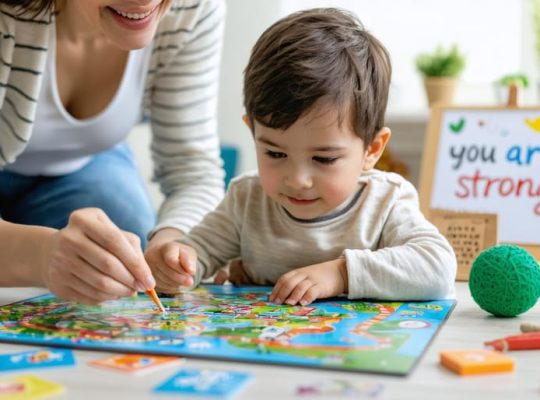In today’s digital landscape, professional social media marketing increasingly targets children through sophisticated algorithms and engaging content, raising urgent concerns about social media’s impact on mental health. Recent studies reveal that children spending more than three hours daily on social platforms show significantly higher rates of anxiety, depression, and low self-esteem compared to their peers with limited exposure.
As parents and educators witness this digital transformation, we’re confronting an unprecedented challenge: balancing the benefits of connectivity with protecting our children’s emotional wellbeing. The constant exposure to carefully curated lives, viral challenges, and addictive content creates a perfect storm of psychological pressure on developing minds.
Dr. Sarah Chen, child psychologist at Stanford Children’s Health, notes: “We’re seeing a concerning trend where social media exposure directly correlates with decreased self-worth and increased social anxiety in children as young as eight years old.” This reality demands our immediate attention and thoughtful intervention to ensure our children’s healthy development in an increasingly connected world.
[Word count: 139]
How Social Media Marketing Targets Children
Algorithmic Targeting and Personalized Content
Social media platforms use sophisticated algorithms to analyze your child’s behavior, preferences, and viewing patterns. These AI-driven systems create a personalized feed that’s designed to keep young users scrolling and engaged for longer periods. When your child shows interest in certain content by lingering on posts or clicking links, the algorithm notes these preferences and serves more similar content, creating a self-reinforcing cycle.
This personalization might seem helpful, but it can lead to concerning outcomes. For instance, if your child watches content about body image, they may soon find their feed filled with potentially harmful diet and exercise content. This targeted approach can intensify existing insecurities and make it harder to spot the warning signs of digital dependency.
Dr. Sarah Chen, a child psychologist, explains: “These algorithms are designed to maximize engagement, not well-being. They can create echo chambers that reinforce unhealthy thoughts or behaviors, especially in developing minds.” The constant stream of perfectly curated content can make children feel like they’re missing out or not measuring up, affecting their self-esteem and mental health.
Understanding how these algorithms work is the first step in helping your child develop a healthier relationship with social media.

Influencer Marketing’s Psychological Impact
Influencer marketing has transformed how children perceive themselves and the world around them. When young viewers watch their favorite social media personalities showcase seemingly perfect lives, expensive products, and idealized body images, it creates a complex web of psychological effects that can significantly impact their self-worth and mental well-being.
Children often develop strong emotional connections with influencers, viewing them as friends or role models rather than marketing channels. This parasocial relationship makes them particularly vulnerable to marketing messages, as they’re more likely to trust and emulate their online idols. Studies show that repeated exposure to influencer content can lead to increased feelings of inadequacy, FOMO (fear of missing out), and decreased self-esteem in young viewers.
The constant stream of sponsored content can also create unrealistic expectations and desires. When children see influencers promoting the latest toys, fashion items, or lifestyle products, it can trigger feelings of dissatisfaction with their own lives and possessions. This materialism often intertwines with self-worth, making children believe that having certain products will make them more popular or successful.
Parents should maintain open conversations with their children about the reality behind influencer content, helping them understand that most posts are carefully curated and often commercially motivated.
The Mental Health Cost
Anxiety and Depression Triggers
Social media marketing can significantly impact children’s mental well-being through various psychological triggers. One mother shared how her 13-year-old daughter became increasingly anxious after being exposed to constant beauty product advertisements and influencer content, leading to decreased self-esteem and social comparison.
Marketing algorithms specifically target young users with content that plays on their insecurities and desires for acceptance. Children are particularly vulnerable to these messages, as their critical thinking skills are still developing. The continuous exposure to perfectly curated lives, idealized body images, and materialistic messaging can create unrealistic expectations and feelings of inadequacy.
Dr. Sarah Thompson, a child psychologist, explains that the dopamine-driven feedback loops created by likes, comments, and targeted ads can lead to addiction-like behaviors. When children don’t receive the expected engagement or can’t acquire advertised products, they may experience anxiety and depression symptoms.
Common triggers include:
– Before-and-after transformation content
– Lifestyle advertisements showing “perfect” families or friendships
– Product promotions suggesting popularity or social status
– FOMO-inducing content about exclusive experiences
– Targeted ads based on personal insecurities
These marketing strategies can create a cycle of comparison, disappointment, and decreased self-worth. Children may feel pressure to maintain certain appearances or lifestyles they see advertised, leading to chronic stress and anxiety about their social standing and personal value.

Body Image and Self-Esteem Issues
Social media platforms have become virtual mirrors where children increasingly measure their self-worth against carefully curated and often manipulated images. The constant exposure to filtered photos, “perfect” body types, and unrealistic beauty standards can significantly impact how young people view themselves.
Marketing campaigns on social media often target children with idealized images of beauty, promoting everything from diet products to cosmetics. These advertisements, combined with influencer content, create an environment where children feel constant pressure to look a certain way. Research shows that children as young as eight are expressing dissatisfaction with their bodies after spending time on social media platforms.
Dr. Sarah Chen, a child psychologist, notes: “Children are particularly vulnerable to these messages because their sense of self is still developing. When they’re bombarded with perfect images, they often can’t recognize that these aren’t realistic representations.”
Parents report concerning behaviors in their children, from refusing to be in photos to expressing anxiety about their appearance. Maria Thompson, mother of a 12-year-old, shares: “My daughter started comparing herself to Instagram models and became increasingly self-conscious about how she looked in her school photos.”
To help children develop a healthy body image, experts recommend limiting social media use, discussing media literacy, and actively promoting self-acceptance. Creating an environment where children feel valued for their unique qualities rather than their appearance is crucial for building lasting self-esteem.
FOMO and Social Comparison
Social media platforms have created a perfect storm for triggering FOMO (Fear of Missing Out) and unhealthy social comparison among children and teens. When young users scroll through their feeds, they’re bombarded with carefully curated highlights of their peers’ lives, creating an unrealistic standard of what “normal” looks like.
Dr. Sarah Chen, a child psychologist, explains: “Children are particularly vulnerable to these comparisons because their self-identity is still developing. When they see friends posting about parties they weren’t invited to or classmates sharing vacation photos, it can trigger intense feelings of exclusion and inadequacy.”
Marketing strategies deliberately exploit these vulnerabilities. Influencers and brands create content that makes children feel they’re missing out on the latest trends, products, or experiences. This constant exposure to “perfect” lives, bodies, and achievements can lead to decreased self-esteem and anxiety.
A recent study found that 78% of teenagers check their social media hourly, primarily motivated by fear of missing important social updates. This compulsive checking behavior often stems from the worry that everyone else is living a more exciting, successful, or connected life.
Parents can help by encouraging open discussions about social media reality versus perception. Teaching children that most posts represent carefully selected moments rather than complete reality can help them develop a healthier perspective. Setting boundaries around social media use and promoting real-world connections can also reduce FOMO’s impact on mental well-being.
Protective Measures for Parents
Digital Literacy Education
Teaching children to become savvy digital consumers starts with helping them understand how social media marketing works. Begin by explaining that not everything they see online is genuine – many posts, especially from influencers, are actually advertisements designed to make them want certain products or lifestyles.
Encourage critical thinking by asking questions like “Why do you think this person is showing this product?” or “How does this post make you feel about yourself?” This helps children develop a healthy skepticism toward marketing messages.
Make it a habit to explore social media content together, pointing out sponsored posts, filtered photos, and product placement. Help them understand that influencers are often paid to promote products, and their seemingly perfect lives are carefully curated.
Practice identifying marketing tactics by playing “spot the ad” games while scrolling through social media. Teach them about common strategies like FOMO (fear of missing out), social proof, and emotional manipulation.
Most importantly, remind children that their worth isn’t determined by likes, followers, or having the latest trending products. Building this foundation of digital literacy will help them navigate social media with greater confidence and resilience.

Setting Healthy Boundaries
Establishing healthy digital boundaries is crucial for protecting your child’s mental well-being on social media. Start by creating a family media agreement that outlines clear rules about screen time, appropriate content, and safe posting practices. Consider designating tech-free zones and times, such as during meals or before bedtime, to encourage real-world connections and better sleep habits.
Help your children understand the importance of privacy settings and teach them to be selective about accepting friend requests and following accounts. Monitor their exposure to marketing content by using parental controls and discussing advertising strategies they encounter. Encourage them to take regular breaks when they feel overwhelmed and to practice mindful scrolling.
Set a positive example by modeling healthy social media habits yourself. Make it a point to have open conversations about their online experiences and create alternative activities they enjoy. Remember, the goal isn’t to completely restrict social media use but to help children develop a balanced and mindful relationship with digital platforms.
Open Communication Strategies
Starting conversations about social media marketing with children requires a gentle, age-appropriate approach. Create regular opportunities for open dialogue by asking your child about their favorite social media content and what ads they encounter. Listen without judgment, and share your own experiences to build trust and understanding.
When discussing marketing influences, use real-world examples they can relate to. For instance, if they mention wanting a product they saw in a sponsored post, ask them what specifically appeals to them about it. This helps develop their critical thinking skills and awareness of marketing tactics.
Consider setting aside dedicated “tech talk” times during family meals or car rides. Use these moments to explore how social media algorithms work and why certain ads appear on their feeds. Encourage questions and validate their feelings about the pressure to buy or engage with marketed content.
Remember to emphasize that it’s normal to feel influenced by social media marketing, and share strategies for making mindful decisions. Teaching children to pause and reflect before making purchase decisions or following trending content can help them develop healthy digital habits that last a lifetime.
When to Seek Professional Help
While social media can be a normal part of children’s lives, certain behaviors and symptoms may indicate a need for professional support. As a parent, watch for signs such as significant changes in sleep patterns, declining academic performance, or withdrawal from real-life activities and relationships.
Be particularly alert if your child shows symptoms of anxiety or depression, such as excessive worry about their online presence, persistent sadness, or expressing feelings of worthlessness related to social media interactions. Compulsive checking of social media platforms, extreme emotional reactions to likes or comments, or inability to limit screen time despite negative consequences are also warning signs.
Seek immediate help if you notice signs of cyberbullying trauma, eating disorders triggered by body image concerns, or if your child expresses thoughts of self-harm related to their social media experiences. Remember, early intervention is crucial for better outcomes.
Consider consulting a mental health professional if your child:
– Shows persistent mood changes lasting more than two weeks
– Experiences panic attacks about social media-related situations
– Develops unhealthy eating or sleeping habits
– Becomes secretive or defensive about their online activities
– Exhibits significant personality changes
There are various mental health treatment options available, including individual counseling, family therapy, and support groups specifically designed for social media-related issues. Your child’s pediatrician can provide referrals to appropriate specialists who understand the unique challenges of growing up in the digital age.
As we’ve explored throughout this article, social media’s influence on children’s mental health is both significant and complex. While these platforms offer opportunities for connection and creativity, they also present serious challenges to our children’s emotional well-being, self-esteem, and social development.
Remember that you’re not alone in navigating these digital waters with your children. By staying informed about the risks and implementing appropriate safeguards, you can help your children develop a healthier relationship with social media. Start by opening honest conversations about their online experiences, setting reasonable boundaries, and modeling positive digital habits yourself.
Consider implementing a family media plan that balances screen time with other activities. Monitor your child’s social media use without being intrusive, and watch for signs of anxiety, depression, or changes in behavior that might indicate digital distress. Most importantly, maintain open lines of communication with your children about their online experiences.
The goal isn’t to eliminate social media from our children’s lives but to help them use it mindfully and safely. By taking an active role in your child’s digital life, you can help them build the resilience and critical thinking skills they need to navigate social media’s challenges while enjoying its benefits.
Together, we can help our children develop a balanced, healthy relationship with social media that supports rather than hinders their mental well-being.







